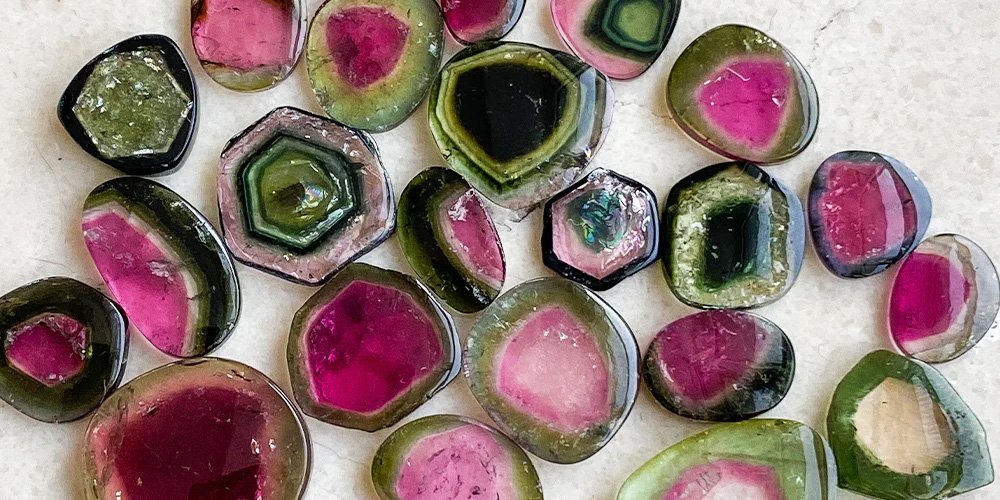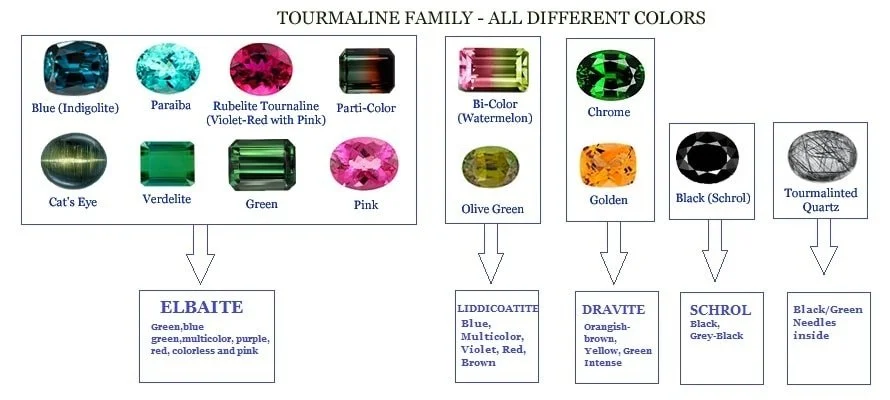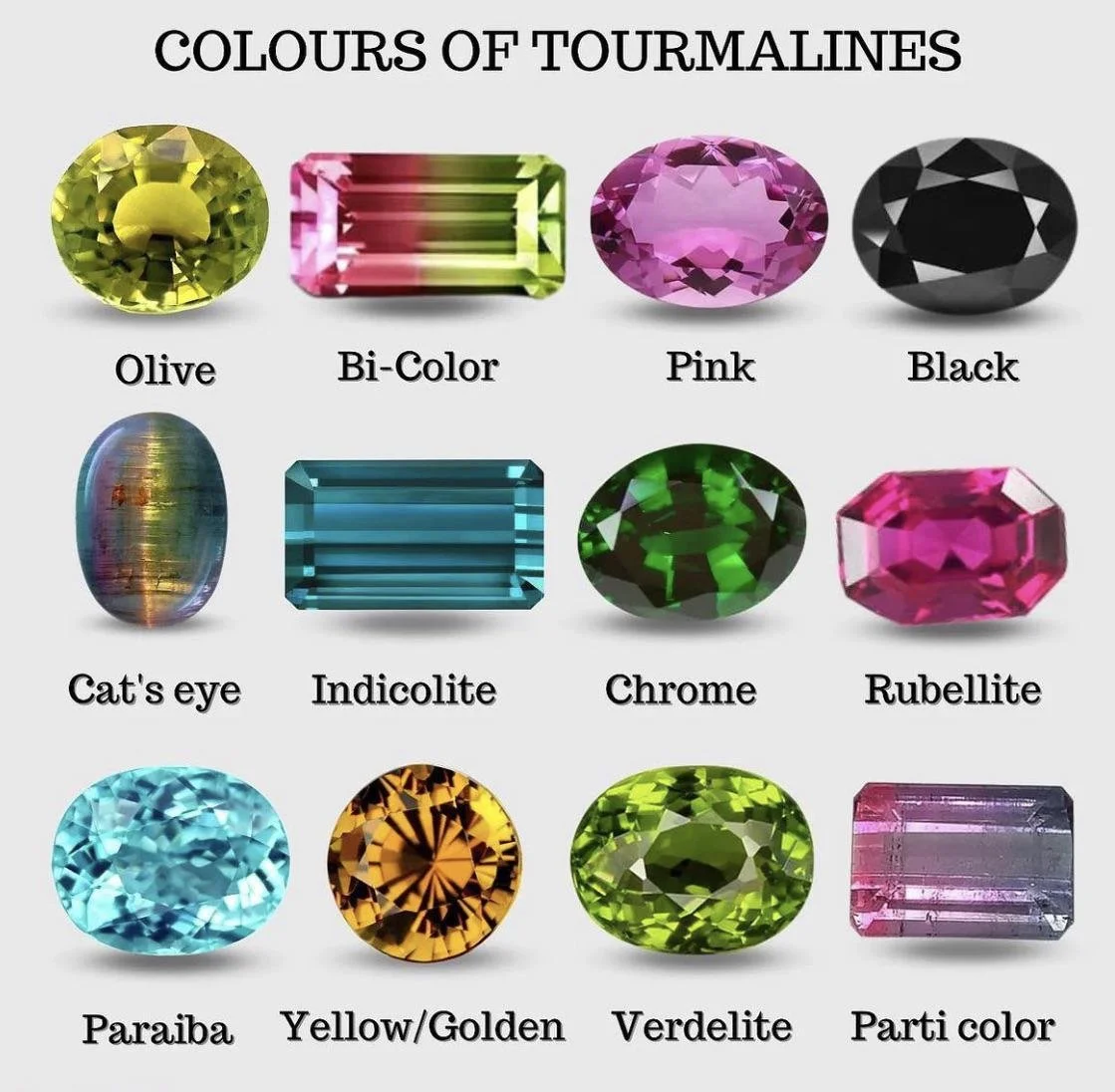Discover the Beauty and Benefits of Tourmaline Gemstones
Tourmaline is one of the most diverse gemstones found in nature, exhibiting a stunning array of colors and properties. From its unique hues to its healing benefits, tourmaline has captivated gem enthusiasts and jewelers alike for centuries. In this blog post, we’ll explore the characteristics, varieties, and advantages of this remarkable gemstone.
What is Tourmaline?
Tourmaline is a complex boron silicate mineral that can contain a variety of elements, resulting in its wide range of colors. The name "tourmaline" comes from the Sinhalese word "turmali," which means "mixed gems." This reflects its incredible variety, as tourmaline can be found in nearly every color of the rainbow, from deep greens to vibrant pinks and blues.
My favorite variety is Watermelon Tourmaline, which looks exactly like it’s name: a slice of tourmaline with a pink center and green edges.
Slices of Watermelon Tourmaline
Fun Fact: Tourmaline is an October Birthstone
While Opal is a popular and traditional birthstone for October, Tourmaline is also considered an October Birthstone alongside Opal. As noted by this guide to gems and birthstones from the UNL School of Natural Resources, Jewelry Industry Council recommended that pink tourmaline be considered an alternate October birthstone to opal in 1952. While the birthstone designation originally specified pink tourmaline, many now accept any color of tourmaline for October's birthstone.
Varieties of Tourmaline
Elbaite: This is the most common variety and comes in many colors. Elbaite is often used in jewelry due to its beauty and versatility.
Schorl: The black variety of tourmaline, schorl is often used for protection and grounding.
Rubellite: This striking pink to red variety is popular in high-end jewelry.
Indicolite: A rare blue variety, indicolite is highly sought after for its unique color.
Watermelon Tourmaline: This stunning stone features pink and green hues, resembling a watermelon slice.
The Healing Properties of Tourmaline
Tourmaline is not just admired for its beauty; it is also revered for its healing properties. Many believe that it can promote physical, emotional, and spiritual well-being.
Emotional Healing
This gemstone is often used to promote self-confidence and alleviate anxiety. Its grounding properties can help balance emotions and enhance mental clarity, making it a popular choice among those seeking emotional healing.
Spiritual Growth
Many crystal enthusiasts use tourmaline for meditation and spiritual growth. Its energy is said to create a protective shield against negative energies, fostering a positive environment for personal development.
Tourmaline in Jewelry
Tourmaline's vibrant colors and durability make it an excellent choice for various types of jewelry, including rings, necklaces, earrings, and bracelets. Whether set in gold, silver, or platinum, tourmaline pieces can be both eye-catching and meaningful.
Choosing the Right Tourmaline
If you are not sure which tourmaline variety is right for you, I’m here to help. There are so many different colors and tones within each color. I want to make sure we choose one together that “speaks” to you.
Caring for Your Tourmaline
To keep your tourmaline jewelry looking its best, clean it regularly with a soft cloth and mild soap. Avoid harsh chemicals and ultrasonic cleaners, as these can damage the stone.
Conclusion
Tourmaline is more than just a beautiful gemstone; it is a symbol of healing, balance, and protection. Whether you are drawn to its stunning colors or its believed metaphysical properties, incorporating tourmaline into your life can enhance your well-being and style. Explore the world of tourmaline today and discover the unique benefits this gemstone has to offer!
Ready to add a touch of tourmaline to your jewelry collection? Visit our online store or local gem dealer to find the perfect piece that resonates with you!



